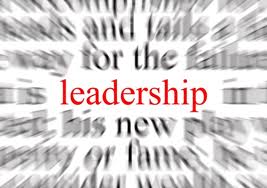Welcome to O.D. Fridays at DonorDreams blog. Every Friday for the foreseeable future we will be looking more closely at a recent post from John Greco’s blog called “johnponders ~ about life at work, mostly” and applying his organizational development messages to the non-profit community.
 Today, I am focusing on a post that John wrote that was inspired by a baby crib mobile. He uses the mobile as an analogy for organizational change and equilibrium. Throughout his post he references both major and minor changes in the corporate landscape and talks about how those cultures balance and re-balance.
Today, I am focusing on a post that John wrote that was inspired by a baby crib mobile. He uses the mobile as an analogy for organizational change and equilibrium. Throughout his post he references both major and minor changes in the corporate landscape and talks about how those cultures balance and re-balance.
As I dwell on this post, I think about a number of non-profits who I’ve had the honor of working with throughout the years:
- There is the organization who employed one of the most talented fundraising professionals I ever knew, and they decided not to re-hire the position after his departure. Needless to say, their resource development efforts are struggling.
- There is the agency whose most influential and engaging board volunteer resigned due to “burn out,” and they decided to not find ways to keep him engaged. Needless to say, he faded away and isn’t even a donor anymore.
- There is an executive director who freaked out after the economic crash in 2008, decided to lay off his grant writer and assumed on all of those responsibilities in addition to his regular responsibilities. Needless to say, someone is feeling overwhelmed and burned out.
I think the baby crib mobile is such a great analogy for what non-profits deal with on a daily basis. In fact, I think it is even more appropriate for non-profit organizations than for-profit corporations. Why? Simply look at how much juggling the average organization does because of significantly limited resources. Consider how much more important a board of directors is to the functioning of a non-profit organization compared to a for-profit corporation. So, when one talented employee or influential board volunteer leaves, then everything feels off off-kilter and the struggle for equilibrium feels like a roller coaster ride.
Looking at a non-profit through this mobile lens, I see a chaotic, whirling dance of people that’s bobbing and dipping and threatening to crash and burn.
The difference between a non-profit organization crashing and burning versus re-balancing to find a new equilibrium is huge and highly dependent on their approach to managing change. To some extent, I also believe that organizational cultures that embrace planning at their core and actually implement and adhere to those plans (e.g. succession plan) during times of change are the most successful at re-balancing in a graceful manner.
Those organizations, who don’t have very much capacity and make poor decisions during tumultuous times, end up in crisis. Sure, balance is ultimately achieved, but at what price?
 The bad news for these types of non-profits is that change is a constant in our world, and their baby crib mobile probably looks like the tangled and dysfunctional one that hung above my crib (because you know that I was the kid who could never leave anything well enough alone). 🙂
The bad news for these types of non-profits is that change is a constant in our world, and their baby crib mobile probably looks like the tangled and dysfunctional one that hung above my crib (because you know that I was the kid who could never leave anything well enough alone). 🙂
Looking back at the three examples that I described at the beginning of this post, I see a common thread . . . LEADERSHIP. I am talking about both board leadership as well as executive leadership. There is no doubt in my mind that the key to successfully keeping your organization from getting tangled and unbalanced is talented, engaged and committed leaders.
And isn’t that just the perfect cherry on top of the sundae when you look back of all of this week’s blog posts? Again, I want to thank my friend and colleague, Dani Robbins, for guest posting all week-long on board development and executive leadership. I am very happy that she will be contributing a board development post to DonorDreams blog every month.
After reading John’s blog post, I can’t get this song out of my head. So, I thought it would be appropriate to end this post with it.
[youtube=http://www.youtube.com/watch?v=fHvf20Y6eoM]
How chaotic is your organizational mobile? Do you have a story about how your agency managed “change” really well? Please scroll down and share it with the rest of us in the comment section.
Here’s to your health!
Erik Anderson
Founder & President, The Healthy Non-Profit LLC
www.thehealthynonprofit.com
erik@thehealthynonprofit.com
http://twitter.com/#!/eanderson847
http://www.facebook.com/eanderson847
http://www.linkedin.com/in/erikanderson847


























